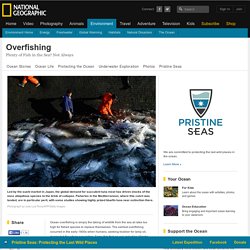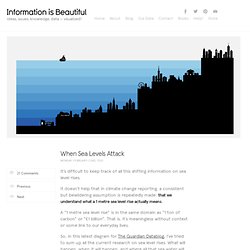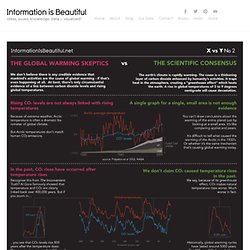

Overfishing. Ocean overfishing is simply the taking of wildlife from the sea at rates too high for fished species to replace themselves.

The earliest overfishing occurred in the early 1800s when humans, seeking blubber for lamp oil, decimated the whale population. Some fish that we eat, including Atlantic cod and herring and California's sardines, were also harvested to the brink of extinction by the mid-1900s. Highly disruptive to the food chain, these isolated, regional depletions became global and catastrophic by the late 20th century. When It Started Marine scientists know when widespread overfishing of the seas began.
In the mid-20th century, international efforts to increase the availability and affordability of protein-rich foods led to concerted government efforts to increase fishing capacity. But by 1989, when about 90 million tons (metric tons) of catch were taken from the ocean, the industry had hit its high-water mark, and yields have declined or stagnated ever since. World's Most Spectacular Waterfalls. The Story of Cap & Trade. Breathingearth - CO2, birth & death rates by country, simulated real-time.
Antarctica’s New Mystery Carbon Sink – Blue Living Ideas. Captain Robert Falcon Scott, head of the second expedition to reach the South Pole, and who, with his team, died on his 1912.

Living on for almost 100 years now are the specimens he collected along the way- among them some smaller “filter-feeding animals” that resemble branching twigs. These specimens, along with many others collected throughout the years, have enabled David Barnes and other researchers of the British Antarctic Survey to identify a mysterious increase over the last two decades in how fast the modern-day versions of those animals grow. The animals, a bryozoan species called Cellarinella nutti, act as carbon sinks because they usually end up on the ocean’s floor, taking their carbon with them., which could be good news not only for climate science, but for offsetting climate change in the long term.
According to Barnes, these animals produce annual growth rings and show their growth rate over time. Image Credit: Rita Willaert via Flickr under CC Tags: Antarctica, ocean. When Sea Levels Attack. It’s difficult to keep track of all this shifting information on sea level rises.

It doesn’t help that in climate change reporting, a consistent but bewildering assumption is repeatedly made: that we understand what a 1 metre sea level rise actually means. A “1 metre sea level rise” is in the same domain as “1 ton of carbon” or “£1 billion”. Global Emissions (Interactive Viewer) 2012: The End Of The World? Climate Change Deniers vs The Consensus. Read about the background to this image | Leave a comment | See more visualisations and info images | Home UPDATE 1 (12th Dec 09): There have been a few complaints about the legibility of the image.

So I’ve created a version on white instead of black. UPDATE 2 (19th Dec 09): Thanks to amazing feedback, I’ve amended the language and wording and detail of the image. Thanks particularly to Arthur Smith and Jooil Kim for clarifying info. Nice! Emergency and Disaster Information Service. This Awesome Urn Will Turn You into a Tree After You Die. You don't find many designers working in the funeral business thinking about more creative ways for you to leave this world (and maybe they should be).

However, the product designer Gerard Moline has combined the romantic notion of life after death with an eco solution to the dirty business of the actual, you know, transition. His Bios Urn is a biodegradable urn made from coconut shell, compacted peat and cellulose and inside it contains the seed of a tree. Once your remains have been placed into the urn, it can be planted and then the seed germinates and begins to grow.
You even have the choice to pick the type of plant you would like to become, depending on what kind of planting space you prefer. I, personally, would much rather leave behind a tree than a tombstone. Fukushima radiation leaks greatly underestimated. Mutant rabbit born near Fukushima plant. Can 1 miracle plant solve the world's 3 greatest problems? If someone were to tell you that they had a technology — a weed actually — that could sequester huge amounts of carbon permanently while lifting villagers out of poverty by providing both protein-rich food and super-insulated building materials, you might start to wonder if they were, well, smoking a different weed.

But it appears that one retired building contractor, Bill Loftus, has actually come upon a brilliant application of the fast-growing, carbon-sucking plant known as Kenaf. Kenaf is in the Hibiscus family and is thus related to both cotton and okra. Originally from Africa, this 4,000-year-old crop was used for its fiber. It has the astonishing ability to grow up to 14 feet in one growing season, yielding 6-10 tons of fiber per acre and making it a great source of pulp for paper. But researchers have also discovered (PDF) a corresponding ability of Kenaf to inhale huge quantities of our most abundant global warming gas — CO2. But its not enough to simply absorb CO2. Eco valuation 'a slippery slope'